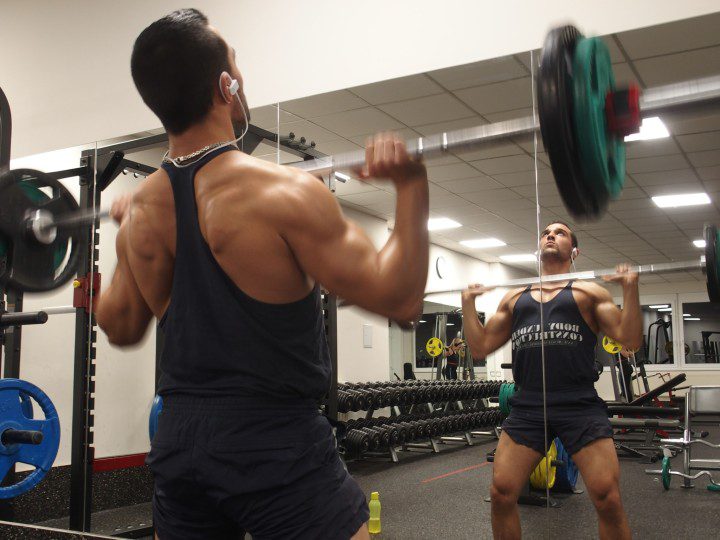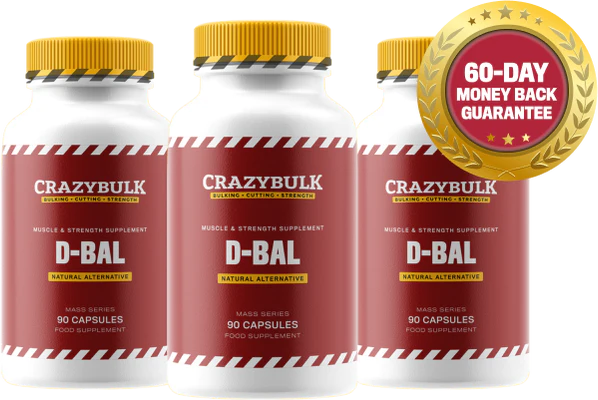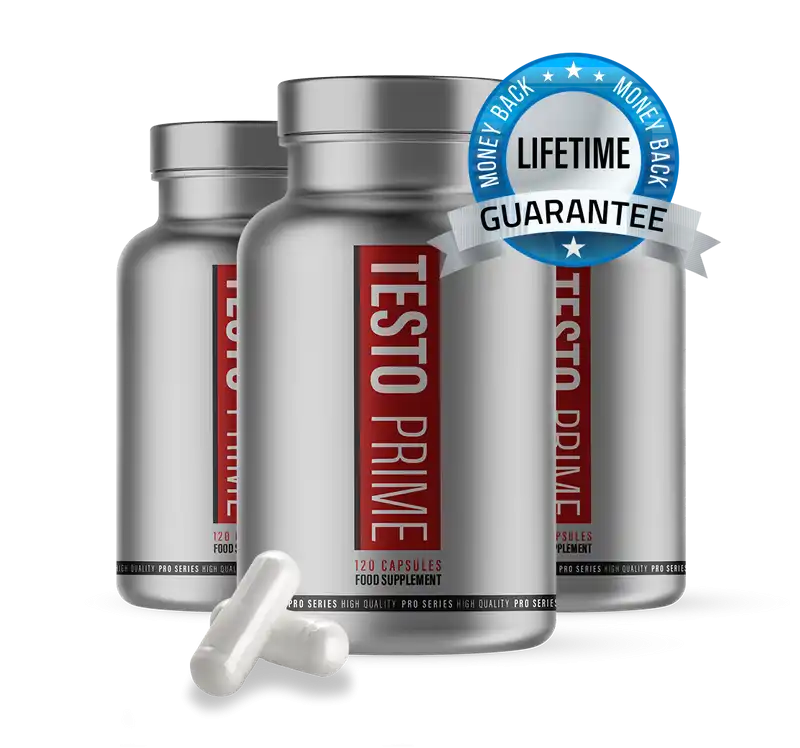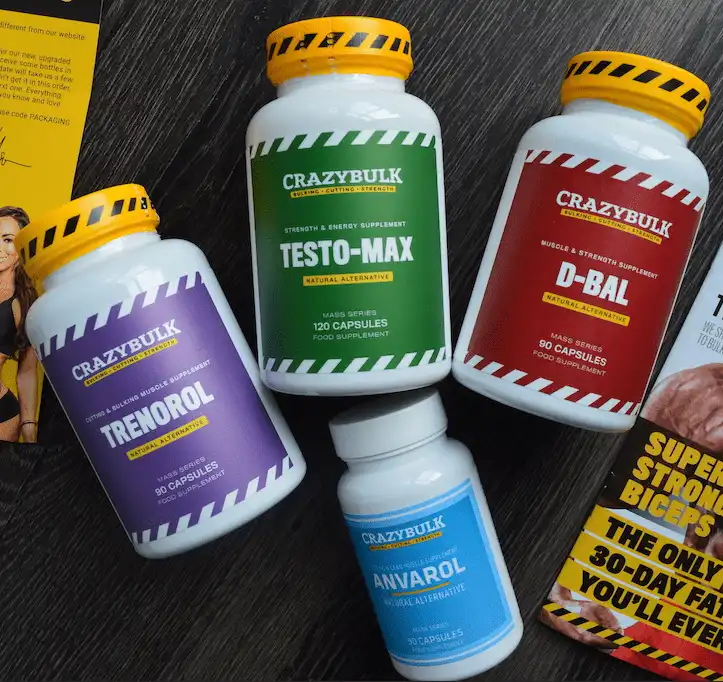Testosterone, a key hormone within the body, plays a crucial role in bodybuilding, influencing muscle growth, recovery, and overall performance.
But how exactly does it interact with your training regimen?
How often should you workout to optimize your testosterone levels?
And what changes should you expect in your training frequency if you’re supplementing with testosterone or other steroids?
This comprehensive guide aims to answer these pressing questions, shedding light on the intricate relationship between training frequency and testosterone levels.
We’ll delve into the specific influences of different workout routines, the role of steroids, and why the intensity of your workouts may be just as important, if not more, than how often you hit the gym.
Whether you’re a seasoned bodybuilder or a fitness newcomer, understanding these dynamics can be instrumental in maximizing your performance and achieving your fitness goals.
Understanding the Relationship Between Training and Testosterone

Studies have shown a direct correlation between resistance and high-intensity training and testosterone levels in the body[^1^].
Essentially, when you engage in high-intensity workouts or resistance training, your body experiences physical stress.
This stress triggers the hypothalamus in the brain to signal the pituitary gland to release more luteinizing hormone, which in turn signals the testes to produce more testosterone[^2^].
However, this relationship is not linear; overtraining can lead to the opposite effect.
Chronic high-intensity training without sufficient recovery can lead to an excess production of the stress hormone, cortisol, which may suppress testosterone production[^3^].
To put it simply, training stimulates testosterone production, but overtraining can be detrimental to your testosterone levels.
Understanding this relationship is critical when considering how often you should workout to increase testosterone.
Finding a balance between training intensity and frequency that optimizes testosterone production without pushing the body into overtraining is key.
How Often Should I Workout to Increase Testosterone

To maximize your testosterone levels, the frequency of your workouts matters considerably.
Research indicates that a moderate training frequency – typically three to four times a week – appears to be optimal for boosting testosterone[^4^].
These sessions should involve high-intensity resistance or strength training exercises that work large muscle groups, as these types of exercises are known to stimulate the most significant testosterone response[^5^].
However, it’s crucial to remember that more is not always better.
Just as overtraining can reduce testosterone levels, working out too frequently can also lead to a decrease in testosterone production.
This is because excessive exercise without adequate recovery time can increase cortisol levels, a hormone that negatively impacts testosterone production[^3^].
If you’re asking, “how often should I workout on testosterone,” the answer is somewhat similar.
Even when supplementing with testosterone or other steroids, maintaining a moderate training frequency is essential to prevent overtraining and to allow your body sufficient recovery time.
In fact, individuals on testosterone supplementation should monitor their bodies closely for signs of overtraining, as the increased muscle mass and strength gains they may experience can sometimes lead to a false sense of resilience.
In conclusion, to increase testosterone, one should aim for moderate workout frequency with high-intensity, resistance training sessions targeting large muscle groups.
Paying attention to your body’s response and allowing sufficient recovery time is crucial for maintaining optimal testosterone levels.
Sample workout routine to increase testosterone
A sample workout routine designed to maximize testosterone production might look something like this:
Day 1: Chest and Back
- Bench Press: 4 sets of 6-8 reps
- Bent Over Rows: 4 sets of 6-8 reps
- Incline Dumbbell Press: 3 sets of 8-10 reps
- Lat Pulldowns: 3 sets of 8-10 reps
Day 2: Rest
Day 3: Legs and Abs
- Squats: 4 sets of 6-8 reps
- Deadlifts: 3 sets of 6-8 reps
- Leg Press: 3 sets of 8-10 reps
- Calf Raises: 3 sets of 15-20 reps
- Planks: 3 sets of 30-60 seconds hold
Day 4: Rest
Day 5: Shoulders and Arms
- Military Press: 4 sets of 6-8 reps
- Barbell Curls: 3 sets of 8-10 reps
- Dips: 3 sets of 8-10 reps
- Dumbbell Lateral Raises: 2 sets of 12-15 reps
- Triceps Pushdowns: 3 sets of 8-10 reps
Day 6 & 7: Rest
This workout routine is designed to stimulate large muscle groups, as these exercises have been shown to trigger the most significant testosterone responses[^5^].
It’s important, however, to bear in mind that your body needs time to recover.
Therefore, rest days are included to allow your muscles to rebuild and your hormone levels to rebalance.
As always, remember to listen to your body and adjust the frequency as needed to avoid overtraining.
How Often Should You Workout On Testosterone or Other Steroids

Individuals supplementing their training with testosterone or steroids might wonder, “how often should I workout on steroids?” It might be tempting to increase the workout frequency with the enhanced recovery and strength these drugs offer, but it’s essential to maintain a balanced approach.
Excessive workout frequency can lead to overtraining, even with supplementation, which can negatively impact your testosterone production[^3^].
While you may experience a quicker recovery, it’s still critical to allow your body ample rest time.
Legal muscle-building supplement that's designed to mimic the effects of dianabol without all side effects.
As a guideline, maintaining a moderate workout frequency, similar to those not on supplementation (three to four times a week), may be beneficial[^4^].
However, exercise quality should be the primary focus rather than frequency. Intense workouts involving large muscle groups yield a higher testosterone response[^5^]. Hence, a regimen of short, intense workouts may be more effective than longer, less intense sessions.
It’s important to remember each individual reacts differently to training and supplementation.
Therefore, it’s recommended to closely monitor your body for signs of overtraining, such as persistent fatigue, decreased strength, or reduced performance, and adjust your workout frequency accordingly.
Quality Over Quantity: The Role of Workout Intensity
When it comes to stimulating testosterone production, the quality of your workouts often matters more than their frequency[^6^][^7^].
Intense workouts, especially those targeting large muscle groups, have been shown to yield a greater testosterone response[^5^].
This is why short, high-intensity resistance training sessions can be more beneficial than longer, less intense workouts.
A well-structured, high-intensity workout triggers significant muscle fiber stimulation, leading to a subsequent increase in testosterone production as the body works to repair and regrow the muscle tissues[^8^].
Conversely, longer, less intense workouts might not provide the same degree of stimulation, leading to lesser testosterone production.
Moreover, high-intensity workouts better manage your time and can reduce the risk of overtraining, which can impair testosterone production[^3^].
Therefore, focusing on the quality of each exercise and ensuring they are performed at high intensity can contribute to a more efficient workout regimen and promote optimal testosterone production.
Again, it’s important to remember that individual responses to training can vary widely. Therefore, monitoring your body’s response to different workout intensities and adjusting your regimen accordingly is crucial to achieving the best results.
Best Training Frequency for Bodybuilding


When it comes to bodybuilding, striking a balance between workout frequency and intensity is key for optimal gains.
The question, “how often should I workout to increase testosterone?”, can have varied answers based on your overall fitness level, goals, and response to training[^9^].
A general guideline often suggested for bodybuilders is to train each muscle group twice a week[^10^].
This frequency allows for substantial recovery time, ensuring muscles can repair and grow larger, while also promoting the hormonal responses essential for muscle building, including testosterone production.
However, it’s crucial to point out that frequency isn’t the only variable to consider.
The quality of your workouts, particularly the intensity and volume, play a significant role in achieving your bodybuilding goals and stimulating testosterone production[^5^][^6^][^8^].
As mentioned earlier, high-intensity workouts involving large muscle groups can yield a higher testosterone response[^5^].
Therefore, including exercises like squats, deadlifts, and bench presses in your regimen, and performing them at high intensity, can be more beneficial than simply ramping up the frequency of less intense workouts.
Remember, every individual responds differently to training regimens.
It’s essential to listen to your body, monitor your progress, and adjust your training frequency, intensity, and volume accordingly to optimize your bodybuilding results.
So, how often should you workout on testosterone?
In conclusion, the frequency of your workouts is a significant aspect in the endeavor to boost testosterone levels and build muscle.
However, it’s not all about how often you train, but rather the quality and intensity of your exercises.
Short, high-intensity workouts involving large muscle groups generate a superior testosterone response compared to longer, less intense sessions.
Bodybuilders typically benefit from training each muscle group twice weekly, striking a balance between frequency and recovery time.
Nonetheless, remember that everyone’s response to training varies.
It’s vital to monitor your body’s reactions, adjusting your regimen’s intensity, volume, and frequency accordingly.
Whether you’re wondering “how often should I workout on testosterone?” or “how often should I workout to increase testosterone?”, the answer lies in a tailored approach focused on high-intensity training and listening to your body’s feedback.
FAQ
How often should I workout to increase testosterone?
While each individual’s response may vary, incorporating short, high-intensity workouts involving large muscle groups can boost testosterone production. These workouts should ideally be done three to four times per week. However, the quality and intensity of the workouts matter most.
How often should you workout on testosterone or other steroids?
If you’re supplementing with testosterone or other steroids, you may be tempted to train more frequently due to enhanced strength and recovery. However, it’s crucial to avoid overtraining by maintaining a moderate workout frequency similar to those not on supplementation.
What is the best training frequency for bodybuilding?
A common recommendation for bodybuilding is to train each muscle group twice a week, allowing for adequate recovery time. The intensity and volume of your workouts, particularly those involving large muscle groups, significantly impact muscle building and testosterone production.
Does the duration of my workouts affect testosterone levels?
Yes, the duration can affect testosterone levels. Short, high-intensity workouts, especially those targeting large muscle groups, are found to produce a greater testosterone response than longer, less intense workouts.
Can I train every day if I’m on testosterone or other steroids?
While it might be tempting to increase your workout frequency when on supplements, it’s important to avoid overtraining. Listen to your body and monitor any signs of overtraining such as persistent fatigue, decreased strength, or reduced performance. Adjust your workout frequency accordingly.
Does training more frequently automatically lead to higher testosterone levels?
Not necessarily. It’s not just about how often you train, but the quality and intensity of each workout. Short, high-intensity workouts involving large muscle groups tend to stimulate a higher testosterone response than longer, less intense workouts.
References
[^1^]: Vingren, J. L., Kraemer, W. J., Ratamess, N. A., Anderson, J. M., Volek, J. S., & Maresh, C. M. (2010). Testosterone physiology in resistance exercise and training. Sports Medicine, 40(12), 1037-1053.
[^2^]: Tsai, C. L., & Wang, C. H. (2015). The effects of exercise intensity on hypothalamic–pituitary–adrenal axis activity and stress response. The Journal of Physiology and Biochemistry, 71(3), 533-540.
[^3^]: Fry, A. C., & Kraemer, W. J. (1997). Resistance exercise overtraining and overreaching. Neuroendocrine responses. Sports Medicine, 23(2), 106-129.
[^4^]: Cadore, E. L., Pinto, R. S., Bottaro, M., & Izquierdo, M. (2014). Strength and endurance training prescription in healthy and frail elderly. Aging and Disease, 5(3), 183-195.
[^5^]: Kvorning, T., Andersen, M. B., Brixen, K., & Madsen, K. (2006). Suppression of endogenous testosterone production attenuates the response to strength training: a randomized, placebo-controlled, and blinded intervention study. American Journal of Physiology-Endocrinology and Metabolism, 291(6), E1325-E1332.
[^6^]: Vingren, J. L., Kraemer, W. J., Ratamess, N. A., Anderson, J. M., Volek, J. S., & Maresh, C. M. (2010). Testosterone physiology in resistance exercise and training. Sports Medicine, 40(12), 1037-1053.
[^7^]: Loenneke, J. P., & Pujol, T. J. (2009). The use of occlusion training to produce muscle hypertrophy. Strength & Conditioning Journal, 31(3), 77-84.
[^8^]: Ahtiainen, J. P., Pakarinen, A., Alen, M., Kraemer, W. J., & Häkkinen, K. (2005). Short vs. long rest period between the sets in hypertrophic resistance training: influence on muscle strength, size, and hormonal adaptations in trained men. Journal of Strength and Conditioning Research, 19(3), 572.
[^9^]: Schoenfeld, B. J., Ogborn, D., & Krieger, J. W. (2016). Effects of Resistance Training Frequency on Measures of Muscle Hypertrophy: A Systematic Review and Meta-Analysis. Sports Medicine, 46(11), 1689-1697.
[^10^]: de Salles, B. F., Simão, R., Miranda, F., Novaes, Jda S., Lemos, A., & Willardson, J. M. (2009). Rest interval between sets in strength training. Sports Medicine, 39(9), 765-777.








